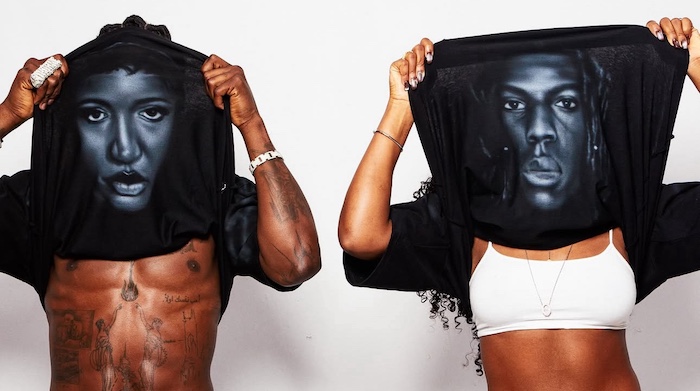“Who’s Dat Girl”: Rema and Ayra Starr Redefine the Modern Afrobeats Power Dynamic
Release date: October 2025
Artists: Rema & Ayra Starr
Label: Mavin Records / Jonzing World
Produced by: Andre Vibez & London
Genre: Afrobeats / Afro-fusion
When Rema and Ayra Starr link up, it’s not just another label collaboration, it’s a cultural event. Their latest single, “Who’s Dat Girl,” dropped into a buzzing Afrobeats landscape that’s still riding the high of global hits from Nigeria’s biggest exports. But this record feels different: it’s not about chasing virality or crossover fame. It’s about reclaiming identity, attitude, and sonic chemistry and the world is listening.
A Moment That Feels Bigger Than Music
Rema and Ayra Starr are both poster children for Mavin Records’ new era, representing the label’s seamless blend of Gen Z energy and Afrofuturist aesthetic. “Who’s Dat Girl” lands as a moment of convergence between two dominant forces do not rival, but reflections of the same creative frequency.
The track’s drop was accompanied by an internet storm: TikTok edits, fan-made mashups, and endless style breakdowns. Within 48 hours, the hashtag #WhosDatGirl had racked up millions of impressions, not just for the song’s hook, but for what it symbolizes, a bold, youthful expression of Nigerian cool.
Where early Afrobeats globalized through joy and rhythm, “Who’s Dat Girl” globalizes through persona. It’s not only a song; it’s an attitude. Rema’s slick confidence and Ayra’s sultry, effortless command create a kind of dual magnetism that mirrors a cultural shift happening across Africa’s youth scene: one that’s self-possessed, fashion-forward, and digitally fluent.
A Sonic Identity in Constant Evolution
On the surface, the production leans into familiar territory, a mid-tempo Afrobeats groove laced with amapiano-inspired percussion, a steady bassline, and an ethereal synth pad that gives the track its dreamlike pulse. But underneath that, there’s a subtle rebellion against formula.
Rema’s verses cut through with his signature mix of swagger and mystique, a sonic aesthetic he’s been perfecting since Calm Down. Ayra, on the other hand, brings that celestial touch she’s known for: soft but commanding, sensual but detached. The synergy doesn’t sound forced; it sounds like two artists who know their lanes and how to meet at the crossroads.
The song feels like a cultural handshake between male and female energy in Afrobeats, something rarely explored with this much nuance. Where many collaborations pit artists against each other in performative chemistry, “Who’s Dat Girl” plays like a conversation, equal parts flirtation and assertion.
Audience Reception: The Soundtrack to a New Self-Image
For fans, “Who’s Dat Girl” isn’t just another hit; it’s a mirror. Across social media, Nigerian and global Gen Z listeners have been interpreting the track as a symbol of confidence and individual expression. TikTok users have spun it into transformation trends, while fashion influencers are borrowing the song’s title as shorthand for self-reinvention “that girl” energy meets Naija flavor.
On X (formerly Twitter), one user wrote:
“Rema and Ayra didn’t just give us a song; they gave us a moodboard for 2025.”
That sentiment captures the broader cultural resonance. In an age where Afrobeats is no longer “breaking into” global consciousness but defining it, artists like Rema and Ayra Starr represent the genre’s aesthetic evolution. Their music doesn’t just sound Nigerian; it feels global without losing its local pulse.
Critically, the song’s reception has also exposed the growing gender balance in the Afrobeats conversation. Ayra Starr’s role here isn’t secondary or decorative; she’s a full co-architect of the sound. Her interplay with Rema reframes the traditional power dynamic, instead of being the muse, she’s the mirror. And audiences have noticed.
Fashion, Identity, and the Afrobeats Cool Factor
Beyond the charts, “Who’s Dat Girl” taps into a broader cultural phenomenon: the fusion of music, fashion, and digital identity. Both Rema and Ayra Starr have cultivated aesthetics that stretch beyond performance, they’re walking cultural statements.
Ayra’s bold, Y2K meets Lagos style and Rema’s cyberpunk-inspired Afrofuturism converge visually in the song’s promo materials and stage visuals. Together, they signal a generational pivot in African pop culture, one where Afrobeats is no longer about export, but about ownership.
For a generation raised on global streaming and self-branding, “Who’s Dat Girl” feels like a call to self-definition. It’s stylish, yes, but also subversive rejecting the idea that Afrobeats needs to conform to Western pop templates to remain relevant. Instead, it celebrates authenticity as the new global currency.
The Larger Picture: Afrobeats 3.0
If Burna Boy and Wizkid ushered in Afrobeats 2.0 global hits, Grammy stages, and crossover collabs then “Who’s Dat Girl” points to what might be called Afrobeats 3.0: an era where the genre defines itself through cultural feedback loops rather than external validation.
Rema and Ayra Starr aren’t chasing global appeal; they’re dictating it. Their collaboration encapsulates what it means to be young, African, and confidently plugged into the digital zeitgeist where borders blur, but identity sharpens.
In the end, “Who’s Dat Girl” isn’t just a catchy duet; it’s a marker of how far Afrobeats has come and how much further it can go when it refuses to play by the old rules.
Rema and Ayra Starr have done more than deliver a hit. They’ve created a cultural moment that’s both futuristic and deeply rooted in the present. “Who’s Dat Girl” sounds like the soundtrack to the next phase of Afrobeats self-aware, boundary-breaking, and unapologetically stylish.
In a world that’s always asking Africa to explain itself, this song doesn’t bother. It just exists loud, confident, and entirely in its own rhythm.



Leave a Reply